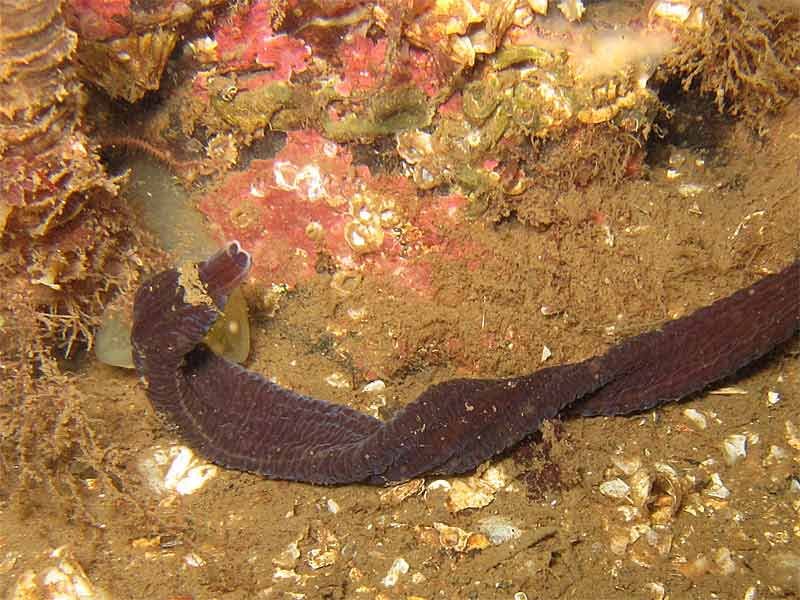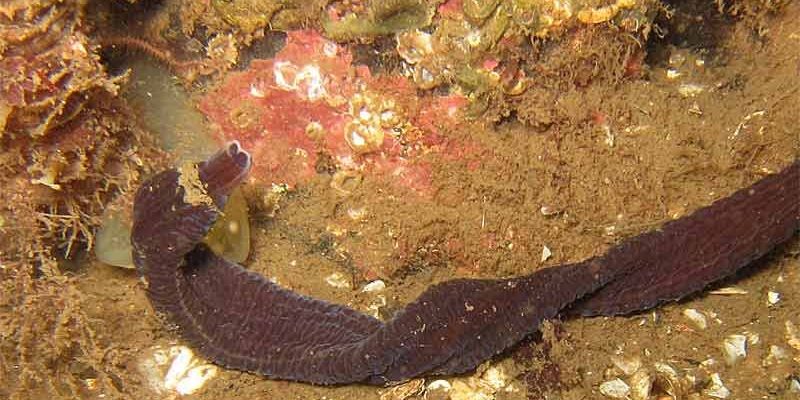
Bootlace worms, also known as *Lineus longissimus*, are among the longest animals on Earth. They can stretch up to 180 feet! It’s almost like a spaghetti noodle that keeps going and going. However, it’s not just their length that makes them special; these worms are vital contributors to the health of their habitats. In the next few sections, let’s dive deeper into their role in marine ecosystems and discover why they should be celebrated rather than overlooked.
What Are Bootlace Worms?
Bootlace worms belong to a group of creatures called nemerteans, or ribbon worms. They’re fascinating for a few reasons. For starters, these worms have a unique body structure. Their long, slender bodies are soft and flexible, allowing them to wiggle through their environments easily. Imagine trying to navigate a crowded room; being flexible can really help!
These worms live primarily in the damp sand at the bottom of oceans and estuaries. They thrive in both shallow and deep waters, which simply means they’re pretty adaptable. Sometimes, they even make homes in decaying plants or organic matter. This means they’re not just sitting around; they’re busy contributing to the ecosystem in various ways.
Bootlace worms can also regenerate. If they lose a segment of their body, they can regrow it! This ability is extraordinary and speaks to their resilience. It’s like a superhero power in the worm world, giving them a unique advantage in surviving in different conditions.
The Role of Bootlace Worms in Nutrient Cycling
One of the key contributions of bootlace worms is their role in **nutrient cycling**. In marine ecosystems, nutrients like nitrogen and phosphorus are vital for the growth of plants and algae. Bootlace worms help break down organic matter, turning it into nutrients that can be used by other organisms. Think of them as nature’s recyclers!
When these worms consume dead plants and animals, they digest them and release their nutrients back into the soil. This process enriches the sediment, making it a perfect feeding ground for other marine life, like fish and crustaceans. Without bootlace worms, the nutrient cycle could slow down significantly, leading to weaker ecosystems.
They also create tunnels in the sediment as they move. These tunnels allow water to flow through the soil more effectively, which helps oxygenate it. This is crucial for the survival of many organisms living in the sediment. The more active and healthy the sediment is, the richer the ecosystem becomes.
Bootlace Worms as Prey and Food Source
Bootlace worms play an essential role in the food chain. While they may seem intimidating with their lengthy bodies, they are actually prey for various marine animals. Fish, birds, and even some larger invertebrates rely on them as a food source. Imagine these worms as the tasty snack in a marine buffet!
For many fish species, bootlace worms are a significant part of their diets. Their abundance in healthy marine environments means that bigger fish can thrive, too. This interdependence highlights the intricate web of life in marine ecosystems. When bootlace worms flourish, they help support a more extensive range of marine life, contributing to biodiversity.
It’s also worth noting that the presence of bootlace worms can indicate a healthy ecosystem. A diverse marine habitat, where these worms can live and reproduce, usually means that other creatures are thriving too. Essentially, they’re an important bellwether for the overall health of marine environments.
Bootlace Worms and Their Environmental Impact
Bootlace worms aren’t just food; they also have a notable environmental impact. As they feed, they help to **clean** the ocean floor. By consuming detritus—decaying organic material—they prevent the build-up of waste. This helps keep the ecosystem in balance and reduces the risk of harmful bacteria that can thrive when organic matter accumulates.
Their burrowing activities also contribute to sediment turnover. This activity helps mix the soil, bringing nutrients from deeper layers to the surface, which benefits plants and other organisms. It’s a bit like loosening the soil in a garden to allow new plants to grow. This soil-turning effect is crucial during different seasons as it can impact the entire ecosystem’s health.
Moreover, in areas where human activity has increased pollution, bootlace worms can help mitigate some of the damage. Their ability to process and recycle organic matter can aid in restoring polluted environments, making them valuable allies in conservation efforts. The more we understand their role, the better we can protect and support marine ecosystems.
Threats to Bootlace Worm Populations
Despite their importance, bootlace worms face several threats that could impact their populations. Human activities, such as pollution, habitat destruction, and climate change, have the potential to disrupt their delicate environments. Think about it: if we keep tossing trash into the ocean or altering its temperature, we’re directly impacting these creatures’ ability to thrive.
Overfishing is another threat to bootlace worms indirectly, as it affects the balance of marine life. If their predators are overfished, the population dynamics can shift dramatically, leading to overpopulation or underpopulation of certain species. This can create a ripple effect, ultimately destabilizing the entire ecosystem.
Furthermore, climate change is altering ocean temperatures and acidifying waters, which can harm bootlace worms. As temperatures shift and habitats change, many marine organisms struggle to adapt. It’s essential to remain aware of these concerns and take steps to mitigate them. Protecting bootlace worms means protecting the balance of our precious oceans.
Conservation Efforts for Bootlace Worms
Conservation efforts are vital to ensuring the survival of bootlace worms and their ecosystems. Many marine conservation organizations are working to promote healthier ocean environments. This includes reducing plastic usage, advocating for sustainable fishing practices, and promoting cleaner marine habitats.
One important strategy involves creating protected marine areas. These spaces limit human activities and give ecosystems a chance to recover and thrive. By reducing stressors in these areas, bootlace worms can continue to flourish, which ultimately benefits the entire marine food web.
Education also plays a big part in conservation. Raising awareness about the importance of bootlace worms can inspire people to take action. Simple changes, like picking up trash along beaches or supporting conservation initiatives, can make a substantial difference. When we understand how each piece fits into the puzzle, we can appreciate the ocean’s complexity even more.
Bootlace worms might not be the first creatures that come to mind when we think about marine ecosystems, but their role is undeniably significant. From nutrient cycling to serving as prey, these fascinating worms help maintain the balance of life in our oceans. Recognizing their contributions helps us realize how every organism, no matter how small or unusual, plays a part in the grand tapestry of life.
As we advocate for healthier oceans, let’s remember the bootlace worm and its critical role in marine ecosystems. Protecting them means protecting the broader health of our oceans, ensuring that future generations will be able to explore and enjoy these beautiful, vibrant underwater worlds. So next time you think of marine life, don’t forget to tip your hat (or your goggle!) to these remarkable creatures.

